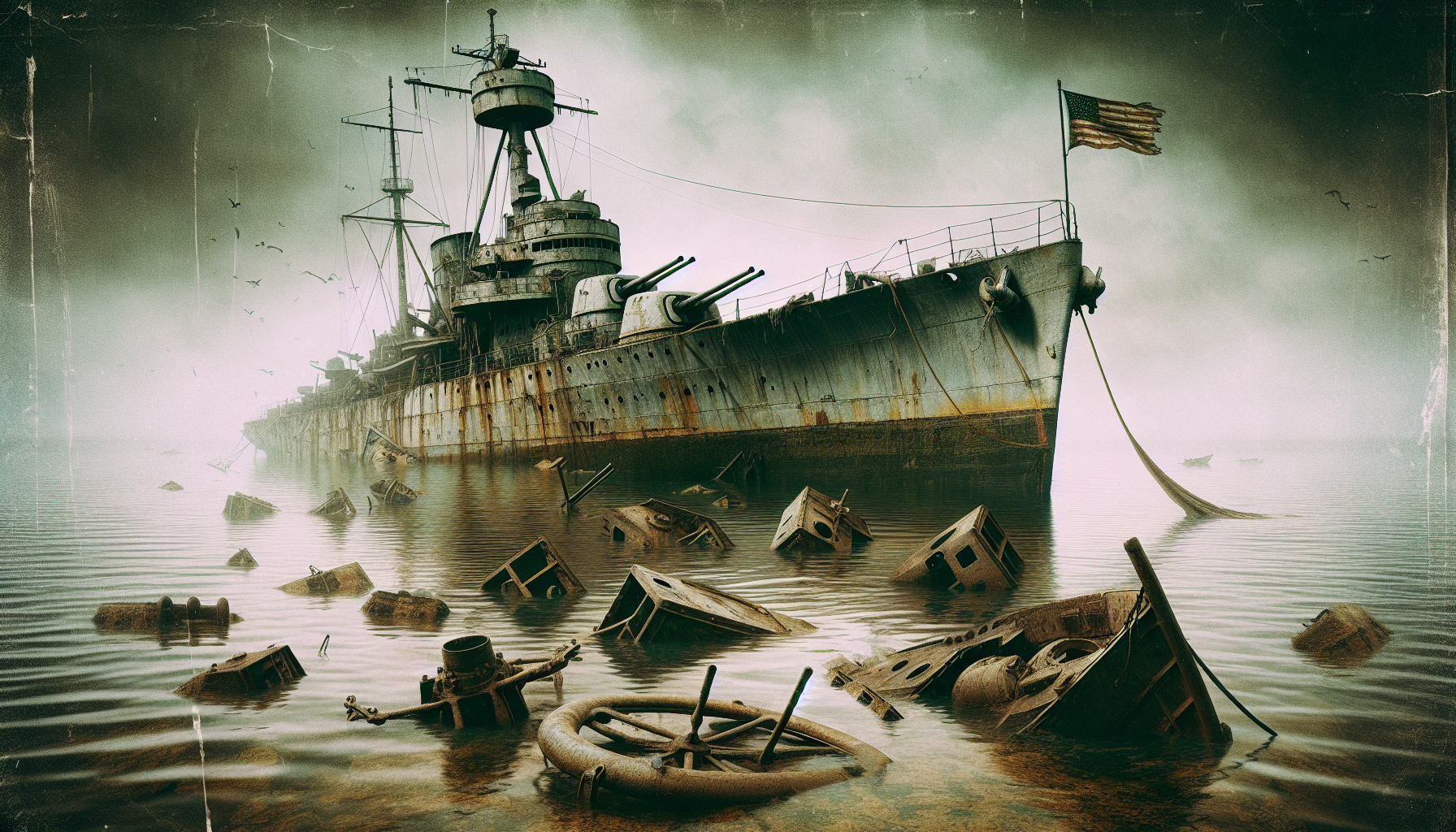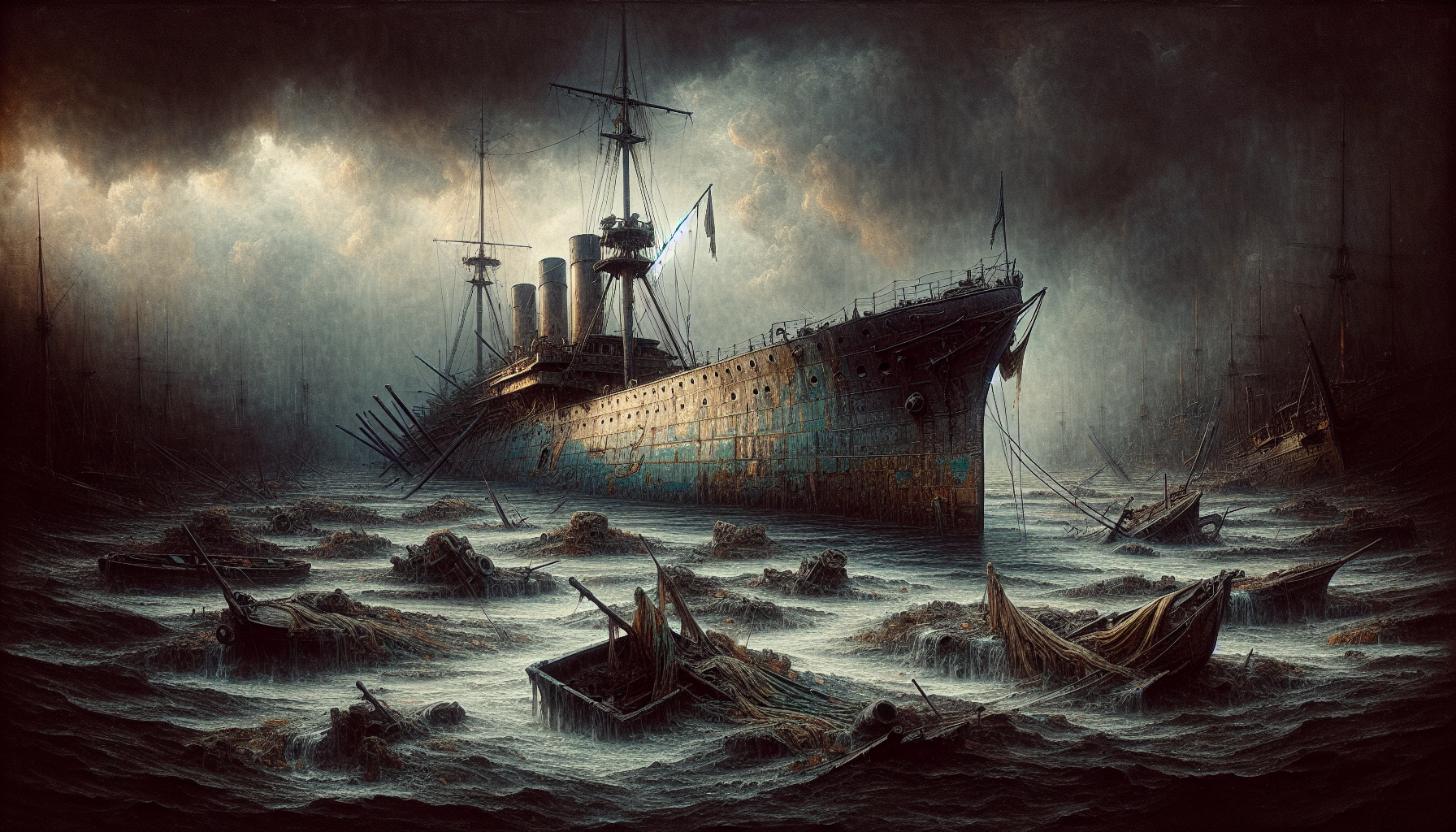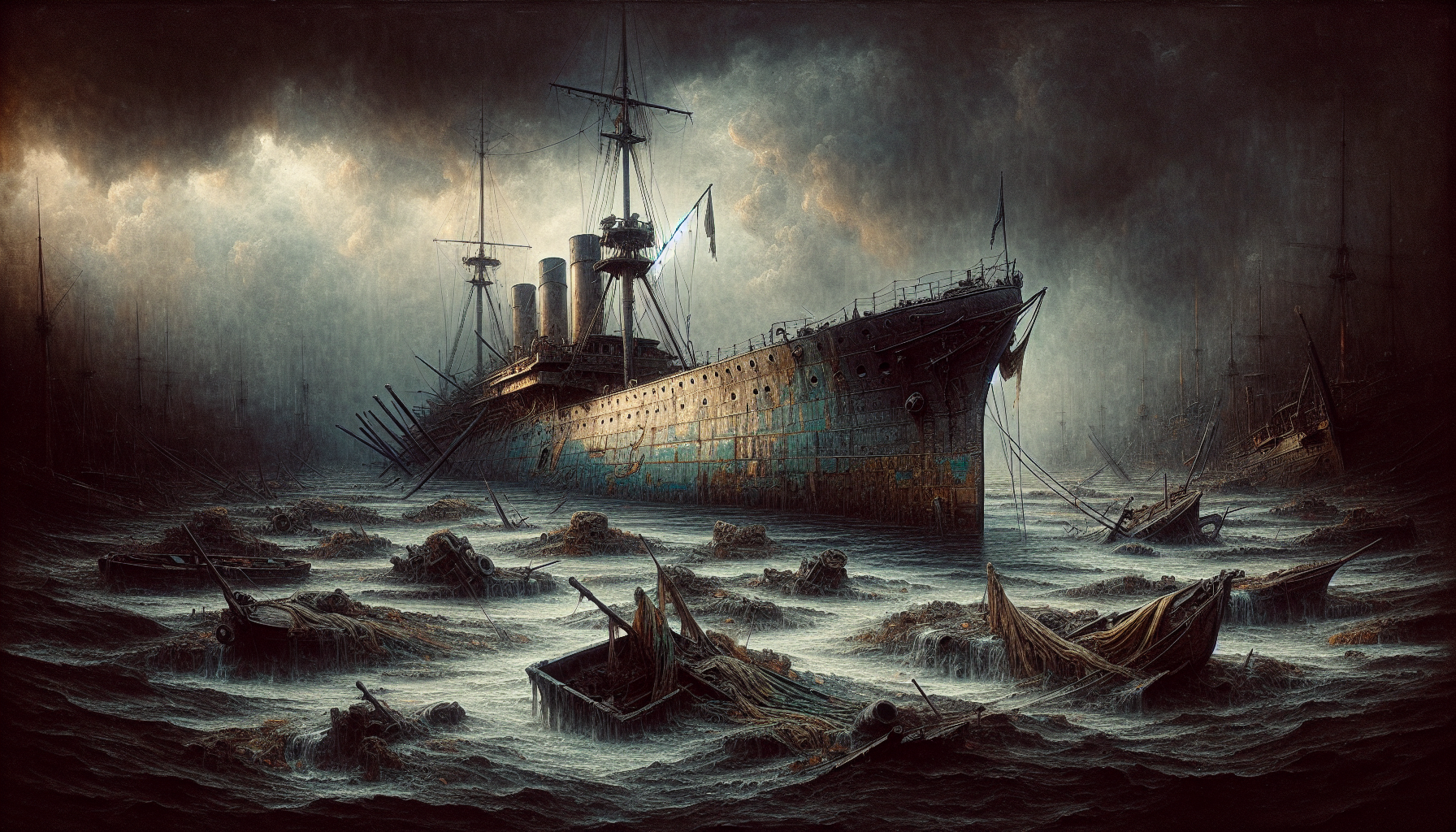The Army maintains a navy that plays a crucial, albeit understated, role in military operations. Despite lacking traditional offensive capabilities, such as missile systems and aircraft, the Army’s fleet is integral to logistics and support, particularly in the Pacific theater. Recent findings from a Government Accountability Office report indicate that out of the Army’s 70 watercraft, only 33.9% are mission-capable, falling significantly short of the 90% standard. This deterioration raises concerns about sustainment logistics and operational readiness, particularly in the face of potential conflicts.
In exploring this issue, the article will outline the historical context of the Army’s maritime operations, examine the current state of the fleet, and assess the implications of its declining performance. Additionally, a critical discussion will address whether the mission of sustaining Army maritime capabilities should be reassigned to the Navy or if a profound reevaluation of military strategy is warranted in this critical region. This examination aims to shed light on the complexities surrounding the Army’s naval assets and the broader ramifications for national defense.
Overview of the Army’s Navy
Definition and Purpose of the Army’s Navy
The Army’s Navy, often referred to as the U.S. Army Watercraft Systems, represents a unique segment of military operations. Unlike the U.S. Navy, which is equipped for direct combat with missiles and aircraft, the Army’s Navy primarily focuses on logistical support and transportation. Its purpose encompasses the movement of troops, equipment, and supplies across waterways, ensuring that ground forces can be effectively mobilized and sustained during operations. This function, while not glamorous or heavily armed, is pivotal to the Army’s overall strategic capabilities, particularly in areas like the Pacific theater, where waterways play a significant role in military strategy.
Historical Context and Development
The roots of the Army’s Navy can be traced back to World War II, when the Army recognized the need to transport troops and supplies via rivers and lakes. This led to the establishment of dedicated units that operated landing craft and support vessels. Over the decades, the fleet has evolved, reflecting changing military needs and technological advancements. The Cold War era saw further expansion, with the Army integrating a variety of watercraft designed for specific tasks, such as troop transport and logistics. The evolution of this force was ultimately motivated by the necessity of maintaining a continuous supply chain in diverse operational environments, underscoring its historical importance.
Role in Modern Military Operations
In contemporary military operations, the Army’s Navy plays a critical role in joint and combined operations. It facilitates amphibious assaults, resupply missions, and troop mobility in environments that are inaccessible by traditional land transport. As the U.S. military shifts its focus towards multidomain operations, the integrative capability of watercraft systems has become increasingly significant. The Army’s naval ships and support vessels enable seamless operational collaboration between ground and naval forces and expand the Army’s strategic options in theaters where maritime logistics are paramount.
Current Fleet Composition
Types of Watercraft Operated by the Army
The Army’s fleet consists of various types of watercraft, including logistic support vessels, landing craft, and specialized ferry boats. Each category serves distinct yet overlapping functions. Logistic support vessels are primarily used for the resupply of troops, while landing craft are essential for delivering personnel and equipment directly onto shore, particularly during amphibious operations. Additionally, there are specialized vessels designed to transport heavy vehicles and provide command and control capabilities during joint operations.
Key Functions of Each Vessel Type
Each type of vessel plays a critical role in ensuring mission success. Logistic support vessels are tasked with securing and transporting equipment and personnel, streamlining the supply chain essential for sustained operations. Landing craft are designed for amphibious assaults, allowing rapid deployment of troops to hostile or inaccessible areas. Specialized riverine and transport vessels enhance mobility, while command and control boats grant logistical oversight during operations. This diversification of responsibilities ensures that the Army can effectively manage operations under varying combat scenarios.
Comparison with Other Military Services
When compared to the U.S. Navy, the Army’s fleet is considerably smaller and specialized. The Navy boasts a formidable array of combat vessels equipped for various naval warfare scenarios. In contrast, the Army’s Navy focuses more on logistical and transport roles, primarily to complement ground operations. This role differentiation highlights the unique operational objectives of each service branch while also emphasizing the importance of inter-service collaboration to ensure a cohesive operational strategy.

Mission-Capable Rates
Statistics from Recent Reports
According to a 2024 report from the Government Accountability Office (GAO), the Army’s Navy is currently facing a mission-capable rate of only 33.9%. This statistic is alarming, especially when juxtaposed against the Navy’s standard mission-capable rate of approximately 90%. The discrepancy underscores systemic issues that hinder the operational effectiveness of the Army’s watercraft.
Impact of Low Mission Capability
The low mission-capable rate has profound implications, creating immediate challenges in sustainment and operational readiness. It directly affects training exercises, with reported complications in conducting drills necessary for effective joint operations. This inadequacy can lead to unpreparedness in real-world scenarios, potentially jeopardizing the Army’s ability to respond decisively during conflicts, especially in the Pacific region.
Comparison to Navy Standards
In contrast to the Navy’s operational readiness, the Army’s low mission-capable rate raises concerns about strategic and tactical capabilities. The discrepancy is not merely numerical; it reflects broader implications for military doctrine and strategy. High mission-capable rates in naval operations allow for increased versatility and readiness. Conversely, the Army’s Navy’s struggles may limit operational flexibility, requiring an urgent examination of policies and operational protocols.
Challenges Facing the Fleet
Aging Vessels and Maintenance Issues
One pressing challenge confronting the Army’s Navy is the aging of its fleet. Many vessels are operating beyond their intended service life, leading to increased maintenance requirements and operational delays. The aging infrastructure complicates the maintenance process, as older ships may require specialized parts and expertise that are not readily available. This situation exacerbates logistical issues, resulting in prolonged downtime for repairs.
Logistical Complications in Sustainment
Logistical complications arise when vessels are unable to operate at full capacity due to maintenance issues or a lack of available fleet resources. This can hinder essential resupply operations and affect the Army’s overall capability to sustain prolonged engagements, particularly in areas like the Pacific, where water transportation is a key element of operational strategy.
Training Limitations Due to Fleet Condition
The condition of the fleet also impacts training programs. A lack of available vessels makes it difficult to conduct effective training exercises, which hampers soldiers’ readiness to operate in maritime environments. The inability to regularly train on watercraft limits the personnel’s understanding of operating procedures and tactical execution, ultimately affecting mission preparedness.

Implications for Military Readiness
Effects on Pacific Operations
The Army’s Navy is particularly crucial for operations in the Pacific, where vast waterways can impede ground-based maneuvers. A diminished fleet capable of operating effectively under such conditions creates vulnerabilities in military posture and can significantly reduce the Army’s response capability in the region. The implications of a compromised fleet extend beyond logistical support; they may also affect strategic deterrence against potential adversaries.
Potential Consequences of Fleet Breakdown
If the current trend of diminishing mission-capable rates continues, the consequences could be dire. A breakdown of operational capability may lead to scenarios in which the Army is unable to effectively deploy troops and support operations in conflict zones. The resultant unpredictability could serve as an opening for adversaries to exploit, therefore undermining the United States’ military standing and influence.
Strategic Importance of Watercraft in Military Configurations
As competitive dynamics in global affairs evolve, the strategic importance of watercraft systems remains paramount. The Army’s Navy adds a layer of capability that enhances the military’s overall strategy. The ability to project power into areas lacking formal air or ground access is a critical advantage that continues to underline the necessity of waterborne logistics in contemporary military configurations.
Analysis of Recent Government Reports
Summary of the 2024 Government Accountability Office Report
The recently released 2024 GAO report identifies critical weaknesses within the Army’s Navy, focusing on fleet readiness and mission capability. The report highlights an urgent need for investment in maintenance and modernization initiatives. It underscores the importance of addressing systemic issues that have affected the longevity and effectiveness of the Army’s watercraft systems.
Key Findings on Fleet Condition and Readiness
The report delineates troubling statistics that reflect the declining status of the fleet. Notable findings include inadequate funding for repairs and shortages in qualified personnel to conduct necessary maintenance. The emphasis on budget constraints speaks to broader issues within military funding priorities, illustrating a need for strategic reallocation towards enhancing watercraft readiness.
Recommendations Provided for Improvement
To address these challenges, the GAO report puts forth several recommendations. These include increasing budgetary allocations for maintenance, facilitating the acquisition of modern equipment, and reinforcing training programs for personnel. Emphasis is placed on the need for a structured support system that prioritizes the Army’s watercraft fleet as a vital component of military operations.

Divestment and Budgetary Concerns
Reasons Behind Fleet Divestment Trends
The trend towards divestment within the Army’s Navy highlights broader considerations regarding resource allocation amidst fiscal constraints. Budget cuts and shifting defense priorities have often led to a reevaluation of non-combat capabilities, resulting in investment reductions for watercraft systems. This has dire implications for fleet readiness and operational effectiveness.
Financial Implications of Maintaining the Fleet
Maintaining an aging fleet necessitates significant financial investment, which can be difficult to justify within the broader context of military funding. The cost of repairs and upgrades can often outweigh perceived benefits, leading to decisions to divest or underfund aspects of naval operations. However, neglecting such investments can lead to substantial long-term costs associated with operational inefficiencies and diminished capabilities.
Alternative Approaches to Funding and Support
In light of the financial challenges, alternative approaches may be necessary to sustain the Army’s Navy. Exploring partnerships with private contractors or other military branches to share resources and expertise can serve as one potential approach. Additionally, reevaluating the primary missions of the fleet can help align funding with strategic imperatives, thus ensuring that the Army’s Navy remains a viable component of U.S. military operations.
Future of the Army’s Navy
Potential Reforms and Strategies
To revitalize the Army’s Navy, a comprehensive reform strategy is essential. This may include prioritizing fleet modernization, investing in new technologies, and enhancing maintenance protocols to ensure operational readiness. Strategic realignments may also be necessary to better integrate the Army’s watercraft capabilities with Naval operations, promoting more unified logistical approaches.
Integration with Naval Operations
Integrating more closely with the U.S. Navy can foster a collaborative environment that maximizes the strengths of both services. The Army’s Navy has much to gain from sharing best practices, enhancing training initiatives, and facilitating joint operations. This cooperation may improve operational flexibility and capability across the spectrum of military operations, particularly in critical areas of strategic importance.
Long-Term Vision for Army Watercraft
A long-term vision for the Army’s Navy should prioritize adaptive strategies that can align with evolving global security challenges. By emphasizing the integration of cutting-edge technology and innovative operational concepts, the Army can ensure its watercraft systems remain an essential and capable element of national defense, capable of addressing both current and future operational demands.
Expert Opinions and Commentary
Insights from Military Analysts
Military analysts often emphasize the growing relevance of the Army’s Navy in joint operational frameworks and argue for renewed attention to this component of military capability. They advocate for a shift in strategic assessments that consider the unique advantages that watercraft systems provide, particularly regarding logistical operations in challenges such as contested maritime environments.
Perspectives from Army Personnel
Feedback from those within the Army highlights the pride and recognition of the importance of the watercraft fleet. Many personnel underscore a desire for greater investment and modernization to enhance operational capabilities. There is a notable concern regarding the risks posed by an under-resourced fleet, which can compromise effectiveness and safety in operational theaters.
Debate on the Role of the Army’s Navy
A broader debate exists regarding the role of the Army’s Navy within the context of U.S. military strategy. While some argue that watercraft responsibilities should be more centralized within the Navy, others maintain that the Army’s unique requirements for logistics and amphibious operations justify an independent watercraft component. This tension reflects the need for continued discussions on optimizing inter-service collaboration for enhanced military readiness.
Conclusion
Summary of Key Points
In summation, the Army’s Navy is an integral yet often overlooked component of U.S. military capabilities. Despite its significant role in logistical support, the fleet faces daunting challenges that threaten operational readiness and effectiveness. The recent GAO report highlights concerns regarding aging vessels, low mission-capable rates, and budgetary constraints that necessitate urgent reform and revitalization.
Call to Action for Policy Makers
For policymakers, the need to prioritize investment in the Army’s Navy is acute. By addressing the challenges identified in the GAO report and reallocating resources strategically, there is an opportunity to enhance the operational effectiveness of one of the military’s most essential yet underappreciated organizational components.
Final Thoughts on the Future of the Army’s Navy
As the geopolitical landscape continues to shift, the Army’s Navy must evolve to meet emerging threats and sustain military readiness. By reimagining its role within the broader strategic framework, enhancing cooperation with the Navy, and prioritizing fleet modernization, the Army can assure its watercraft systems will remain relevant and operationally effective in the future landscape of military conflict. The Army’s Navy must no longer be relegated to the backburner of military doctrine but should be positioned as a cornerstone of future U.S. military operations.
